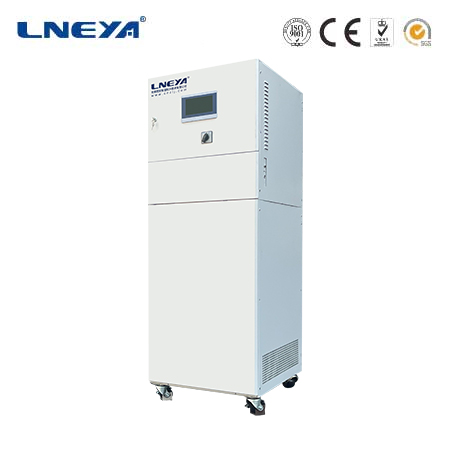external chiller
Closed-Cycle Cooling Water System: Precision Temperature Control for Diverse Applications
A closed-cycle cooling water system, often referred to as a recirculating water bath chiller, is an essential piece of equipment in various scientific and industrial processes. These systems are designed to provide precise and consistent temperature control, ensuring optimal conditions for sensitive processes.

Key Components of Closed-Cycle Cooling Water Systems
Chiller Unit: The core component that cools the water through a refrigeration cycle.
Heat Exchanger: Facilitates the transfer of heat from the process to the water, ensuring even temperature distribution.
Circulation Pump: Circulates the cooled water throughout the system, maintaining a uniform temperature.
Applications of Closed-Cycle Cooling Water Systems
These systems are used in a wide range of applications, such as:
Chemical Processing: For maintaining precise temperatures in chemical reactions and processes.
Material Testing: In laboratories for testing the properties of materials under controlled temperature conditions.
Medical Research: For temperature-sensitive medical equipment and samples.
Selecting the Right Closed-Cycle Cooling Water System
When selecting a closed-cycle cooling water system, consider the following factors:

Cooling Capacity: Ensure the system can meet the cooling demands of your application.
Temperature Range: Verify the system’s ability to reach the required low and high temperatures.
Fluid Compatibility: Confirm the system is compatible with the fluids used in your process.
Maintenance and Operation
Proper maintenance of closed-cycle cooling water systems includes regular inspections, cleaning of the heat exchanger, and checking for refrigerant leaks. Operation involves monitoring the system’s performance and making adjustments as needed to maintain the desired temperature.
Environmental Considerations
Closed-cycle cooling water systems can contribute to environmental sustainability by using energy-efficient designs and environmentally friendly refrigerants.

Conclusion
A closed-cycle cooling water system offers a reliable and efficient solution for temperature control in various applications. By understanding their key components, applications, and the factors involved in their selection and maintenance, users can ensure optimal performance and reliability in their processes. The advancements in chiller technology have made these systems more accessible and efficient for a wide range of operations.
This article provides a comprehensive guide to closed-cycle cooling water systems, discussing their key components, applications, and the considerations for their selection and maintenance. It emphasizes the importance of choosing the right system for specific temperature control needs and highlights the advancements in chiller technology that have made these systems more accessible and efficient.
Related recommendations
temperature control cooler
679Temperature Control Coolers: Thermoelectric Coolers for Precise Thermal Management Temperature control coolers, especially thermoelectric coolers (TECs), play a critical role in maintaining opt...
View detailsworking of air cooled chiller
167The Refrigeration Cycle: Core Working ProcessThe working of an air cooled chiller is centered on the refrigeration cycle, which consists of four sequential stages, each facilitated by key compone...
View detailsWhat is the maintenance and inspection of a 200 ton chiller?
1169What is the maintenance and inspection of a 200 ton chiller? 1. Check the stability of voltage and current 2. Regularly inspect the compressor The necessary acceptance tes...
View detailsglycol water chiller
332Glycol water chillers are an important type of cooling equipment used in a wide range of applications. They are designed to cool a process fluid, typically a mixture of glycol and water, which is ...
View details
 LNEYA Thermal Test Chillers
LNEYA Thermal Test Chillers







HelloPlease log in